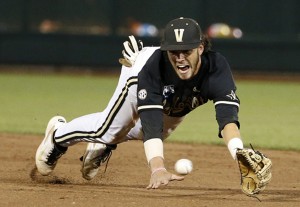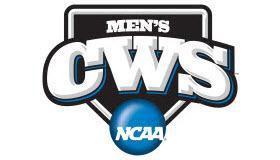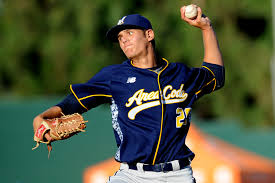The MLB rule-4 (Amateur) draft starts on Monday 6/8/15 at 7pm. See MLB Network for the best coverage. Since we’re also going to be talking about prep regional results and CWS results early next week, I thought i’d get this draft coverage post out there. This post has good links to use to see draft prospect rankings, then links to help cover the draft starting monday, then some blurbs on local players of interest, and then links to a bunch of mock drafts.
Draft Coverage so far at NAR for 2015:
- here was our 2015 pre-season local player link.
- the shake-up at the top of draft boards with the news of Aiken and locally-tied Matuella‘s TJ surgeries in March.
Here’s a slew of Draft Prospect rankings : these are NOT the same as mock drafts; see further down for those.
- D1baseball HS top 100 players with commitments (most of it behind a pay-wall)
- Keith Law‘s Early top 50 draft prospects
- MLB’s initial top 50 draft prospects
- Jon Sickels early draft thoughts.
- Kiley McDaniels early draft rankings.
- MLB’s Late may top 200 draft prospect rankings.
- Baseball America’s top 500 draft prospects
- MinorLeagueBall’s top 400 draft prospects
- Chris Crawford (now Baseballprospectus.com) top 100 draft prospects
- Scout.com’s Jeff Ellis 1-35 draft prospect rankings and 36-75 rankings (some scout.com stuff is behind the pay-wall)
- D1Baseball.com’s Top 150 Draft Prospects (mostly behind a paywall)
- MLBDraftReport’s top 500 with write-ups…
Draft Links of importance
- MLB.com Official 2015 Draft Central home page.
- MLB’s Awesome Draft Tracker; you can slice and dice the draft 10 different ways, search by schools and home states, etc.
- Official MLB 2015 Draft Order (Nats first pick is #58 well into the 2nd round, next #69, then #103, then #134 in the 4th round, and then 134+30 picks there-after.
- Official Draft Bonus Pool totals. Astros have $17M (most). Nats have 3rd least at $4.1M.
- MLB Draft Database
- Fangraphs Sortable Draft Board; a great new tool Fangraphs has that lets you slice and dice their top draft board.
- Baseball-Reference Draft Tools: links to their draft database plus some custom reports.
Now, some news about College Players with local ties
- Nathan Kirby Lat strain Press Release: UVA’s ace Kirby, considered a mid-to-late 1st rounder, missed a huge chunk of the season with a Lat Strain. If the cards fall right, he may be able to pitch UVA’s 3rd regional game. MLB has him ranked #26, as does BA.
- Mike Matuella, of Great Falls (Georgetown Prep) and Duke, remains a back-end of the 1st round draft prospect but is also rehabbing his own TJ surgery. He has far less of a track record than other college arms, and may be a crap shoot in the draft. MLB has him ranked #28, BA #23.
- Taylor Clarke, who hails from Ashburn (Broad Run HS), was named the CAA pitcher of the year while putting up stellar numbers for the College of Charleston, a trendy underdog pick to reach the CWS. MLB has him ranked #144, so that’s perhaps a 4th-5th rounder, while BA has him higher at #118. Here’s a draft profile of him from scout.com.
- Joe McCarthy, OF for UVA, missed most of the season with a back injury and then hit horribly after wards. His draft stock has dropped from a supp-1st to probably the back end of the 2nd round. MLB has him ranked #68, BA #46.
- Josh Sborz got dumped out of UVA’s rotation but still is ranked #115 in MLB’s pre-draft rankings (projecting to a 3rd-4th rounder).
- Brandon Waddell had a good season as UVA’s #2 starter … and MLB projects him as a 5th rounder at #163. BA has him at #153.
- University of Maryland’s two best draft prospects are Alex Robinson (MLB ranked #124) and Brandon Lowe (MLB ranked #148). Robinson is #74 on BA’s top 500 list and Lowe is #98 on BA’s list.
- Radford’s Michael Boyle has pushed his draft stock up with his team’s post-season performance; BA has him ranked #132, which puts him in the 4th-5th round.
Local Prep players of note:
- Cody Morris, probably the best local player matriculating this year, had to undergo TJ surgery and likely scuttling his draft plans. Luckily he had already taken a scholarship offer to South Carolina, where he will now presumably attend and rehab to get ready for the 2016 season. BA still has him ranked #265 but the odds of a team taking him in the 8th round seem slim.
- A.J. Lee of St. Johns earned his 2nd straight Gatorade DC player of the year award and remains committed to Maryland; I do not sense he is a significant draft prospect and will go to College. He is not in BA’s top 500 prospects.
- Ljay Newsome of Chopticon (south of Waldorf) made some noise with his stellar 3-A state final game; he has not picked a college and I wonder if he’s headed for the draft. He is not in BA’s top 500 prospects.
- Nic Enright of Steward HS in Richmond (2015 Gatorade player of the year) is signed to Va Tech but ranked #132 by MLB. Will he sign if he gets 3rd round money? BA’s got him ranked far lower; #230, in the range of draft rankings where it makes more sense for him to go to school.
Other players of interest to Nats fans:
- Andrew Suarez, the Nats’ 2nd round pick of last year, had a decent if not spectacular senior season at Miami and may end up getting picked right in the same spot. MLB has him #75, BA #73.
- Austin Byler, the Nats’ 9th round pick of last year, is ranked #199 by MLB (but much higher at #115 by BA) putting him in the 7th round or so. Not too much of an improvement over last year; his senior season was more of the same for him; lots of power, perhaps stuck at 1B so will really have to hit his way moving forward.
- Skye Bolt, the Nats’ 26th round pick in 2012, had a great UNC career and is ranked #67 by MLB ahead of the draft. BA has him a bit lower at #106. Maybe the Nats can draft him again since this is right around where their first 2015 draft pick falls.
Mock Draft Guesses
Sometimes you just can’t help yourself. I like mock drafts from writers I like. Since the Nats don’t pick until midway through the 2nd round, there’s no point (like in years’ past) in trying to project the Nats pick. So here’s some popular pundits and their mocks, with their top 5 predictions (Law = Espn, McDaniel = Fangraphs, Callis & Mayo = Mlb.com, Manual = Baseball America and Crawford = Baseball Prospectus)
- Keith Law Mock #1: Dansby Swanson, Alex Bregman, Dillon Tate, Brendan Rodgers, Kyle Tucker
- Keith Law Mock #2: Swanson, Rodgers, Tyler Jay, Tate, Tucker
- Keith Law Mock #3 (on ESPN podcast): Swanson, Bregman, Rodgers, Tate, Tucker
- Keith Law final Mock: Swanson, Bregman, Rodgers, Trenton Clark, Andrew Benintendi
- Kiley McDaniel Mock #1: Swanson, Rodgers, Tate, Kyle Funkhouser, Daz Cameron
- Kiley McDaniel Mock #2: Swanson, Rodgers, Jay, Bregman, Tucker
- Kiley McDaniel Mock #3: Swanson, Bregman, Rodgers, Tate, Tucker
- Jim Callis Mock #1: Swanson, Rodgers, Jay, Cameron, Carson Fulmer
- Jim Callis Mock #2: Swanson, Bregman, Rodgers, Cameron, Tucker
- Jim Callis: Final Mock: Swanson, Bregman, Rodgers, Tate, Benintendi
- Jonathan Mayo Mock #1: Tate, Rodgers, Swanson, Cameron, Fulmer
- Jonathan Mayo Mock #2: Swanson, Rodgers, Jay, Cameron, Tate
- Jonathan Mayo Final Mock: Swanson, Bregman, Rodgers, Cameron, Tate
- John Manual Mock #1: Tate, Swanson, Rodgers, Jon Harris, Tucker
- John Manual Mock #2: Fulmer, Swanson, Rodgers, Tate, Tucker
- John Manual Mock #3: Jay, Swanson, Rodgers, Tate, Tucker
- John Manual Mock #4: Swanson, Bregman, Jay, Rodgers, Cameron
- Jeff Ellis/Scout.com Final Mock: Swanson, Bregman, Rodgers, Tate, Tucker
- David Rawnsley/si.com final mock: Swanson, Bregman, Rodgers, Tate, Cameron
- Chris Crawford Mock #1: Garrett Whitley, Swanson, Rodgers, … the rest behind a pay-wall.
- Ryan Sullivan/NatsGM final mock: Swanson, Bregman, Rodgers, Tate, Tucker
- D1baseball.com Mock #1: Swanson … and the rest behind a pay-wall.
- Jon Sickels/MinorLeagueBall Mock #1: Swanson, Bregman, Jay, Rodgers, Tucker
- PerfectGame.org’s mock drafts and coverage now behind a pay-wall.
Todd Boss’ Mock draft? Based on my vast level of expertise (sarcasm) and the thousands of man hours i’ve put in scouting players in person and cultivating industry sources (also sarcasm), I’ll take this as my guess for the top 5:
- Swanson: I think Swanson’s post-season hitting combined with his positional flexibility and the decline of all the upper-end college arms that have been mentioned in the conversation for 1-1 (First Aiken & Matuella, then Tate, then Funkhouser and Fulmer) has cemented Swanson’s spot at 1-1. In other years, he’d be lucky to go in the top 10. Not this year. Arizona goes with the least risk; proven college hitter.
- Bregman: practically every connected pundit now has Bregman going 2nd. Houston gets a sure thing and goes prep with #5.
- Rodgers: Houston hasn’t backed away from HS players before and get the best one, a SS with power, at #2.
- Tate: Tate’s regional performance pushed him back into this lofty level and he’s a better bet than Jay thanks to his reliever status all year. Colorado likes college arms this high. He makes the most sense. If this pick isn’t Tate, its Jay.
- Tucker: practically everyone has Houston’s 2nd pick on Tucker, meaning they’re taking two upper-end prep talents. Plus the Astros know the family; Kyle’s older brother Preston was a 7th round pick by Houston in 2012 and made his debut this year. Makes too much sense.
So, just so you know, this guess matches the final mocks of Law, McDaniel and Ellis, and is nearly identical to the final mocks of a couple others.
This top 5 means some big time names are available 6-10. Cameron, Jay, Fulmer, Clark and Harris could very well be in the next 4-5 guys picked. Funkhouser seems to be slipping. Also throw the likes of Andrew Benintendi, Tyler Stephenson, and Walker Buehler into the top 10 possible mix.
ACTUAL DRAFT Results added on 6/7/15: Swanson, Bregman, Rodgers, Tate, Tucker. A number of the experts above had the top 5 pegged. Yours truly … changed his prediction last minute to match the consensus and “got it right” too 🙂


